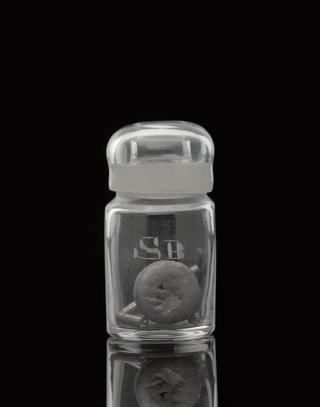
Glass-stoppered bottle containing antimony
1801-1892 (prepared)

1801-1892 (prepared)

1887-1900

1501-1700

1872
1880-1910
before 1889
1893-1900
1940-1960
1837-1870
1970-1985
1901-1950
1880-1920
1970-1980
circa 1860
1870